Write Us
We are just a call away
[ LET’S TALK AI ]
X
Discover AI-
Powered Solutions
Get ready to explore cutting-edge AI technologies that can transform your workflow!

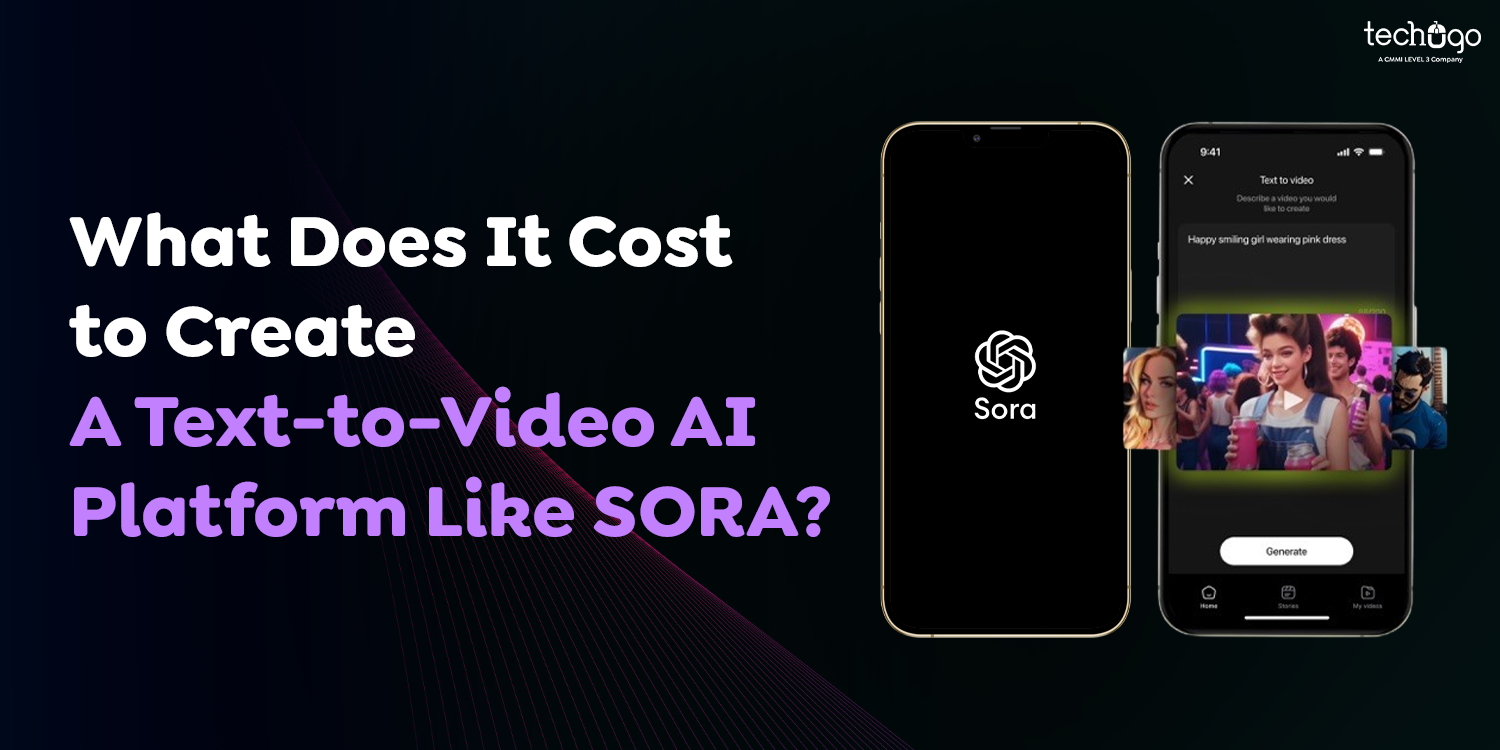
Artificial intelligence has grown dramatically in recent years as it has been able to understand and replicate various aspects of human experience. One of the most significant innovations of mobile app development company in Dubai is the revolutionary Sora model that OpenAI has introduced. This model is set to change the way we interact with AI-generated content. Sora’s ability to process text inputs and transform them into dynamic, realistic films is an important step forward in artificial intelligence.
With the capability to convert text into video format, Sora Dubai application development provides new opportunities for problem-solving and creativity. App users can present an event or scene in the form of words or even video, and SORA application development for mobile devices in Dubai can accurately and precisely depict the scene. Imagine a bustling boulevard in Tokyo illuminated by glowing neon lights or drawing the elegant movement of woolly mammoths against the backdrop of snow. Sora app development in Abu Dhabi expertly bridges the gap between imagination and reality.
This thorough overview covers every aspect of SORA Dubai App development. This includes its functions, use, advantages, and disadvantages, as well as the basic research methodologies that underpin its operation.
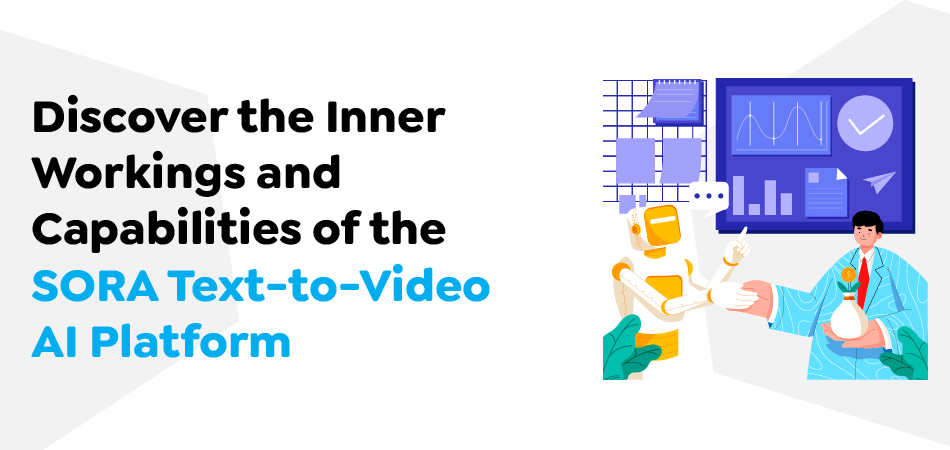
Neural networks such as SORA were developed based on various images and videos. They can produce high-quality videos lasting up to 60 seconds with complex scenarios, precise camera movements, and even emotional actors who receive written instructions.
Sora employs cutting-edge deep learning and natural language processing (NLP) methods within a multi-layered neural network. The app development in Dubai includes many components that process and convert the textual description to visual images. These include transformers, recurrent neural networks (RNNs), and convolutional networks (CNNs).
In response to a cue from a textual source, Sora begins examining the input to find important contextual and semantic details. Based on this understanding, the program creates frame animations by adding characters, objects, backgrounds, activities, and other elements to make coherent video sequences. SORA creates videos that are lifelike and closely correspond to the text by continually improving and refining.
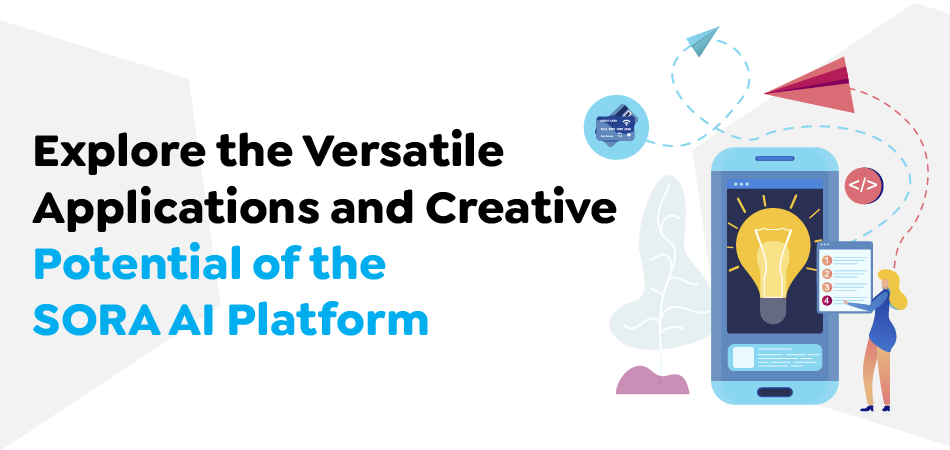
The applications of SORA developing mobile apps in Abu Dhabi vary. Many possibilities range from assisting educators in creating immersive learning environments in iOS application development in Riyadh or Android app development in Riyadh to helping visual artists and filmmakers develop content. In addition, SORA’s ability to reproduce the natural world offers new possibilities for research across various domains, including models of the environment, autonomous vehicles, and robotics.
SORA’s innate the best programming language understanding is among its most impressive features. It allows it to recognize cues effectively and create characters that display a variety of emotions. In addition, SORA can create numerous sequences in one film, which allows seamless transitions between scenes without losing the consistency of the actors or look.
Read more : Decoding the Dynamics: Is RPA a part of AI?
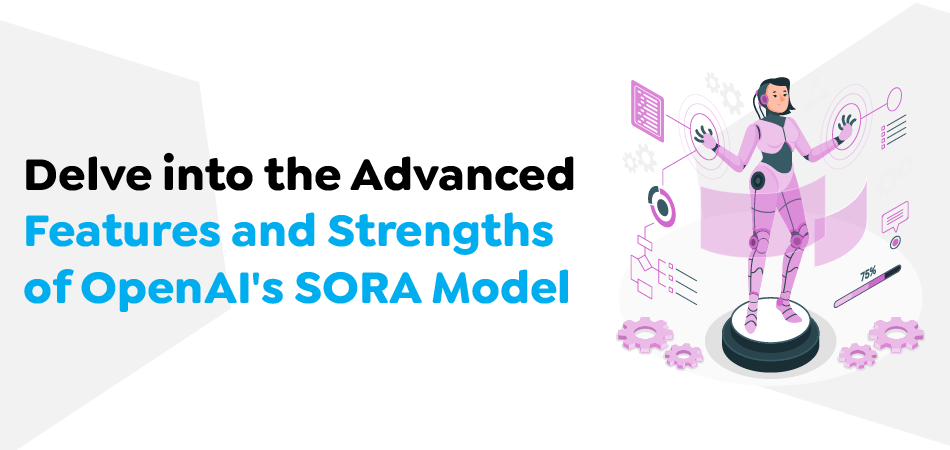
OpenAI’s Sora boasts impressive capabilities to test the boundaries of AI-generated video. Here’s a list of its main strengths:
Sora’s primary strength is translating texts into high-quality video. Users can give instructions in text that outline specific actions and feelings they want. The model interprets the prompts and determines the final results using its extensive knowledge of the relationship between text and images.
Sora is revolutionizing the game by using diffusion models, such as SDEdit. It allows you to change the style of your video with a video editing app and its environment using only text prompts. The zero-shot editing feature opens up the possibilities of creativity, making video editing simpler and easier.
Sora can create a video by analyzing the image created by DALL-E and the related text prompt. Then, it applies advanced techniques to create animations and fuses the image with motion and dynamics.
Sora seamlessly connects videos to completely different subject matter and compositions. It allows to connection of multiple videos to create a seamless user experience.
Sora creates images based on instructions in the beginning. The whole process involves arranging the patches of Gaussian noise on a spatial grid with an elongated temporal frame. The model can generate images of different sizes up to 2048 x 2048 pixels resolution.
OpenAI’s Sora offers exciting possibilities to simulate various aspects of the natural world using the generation of video from text. Here are some of the simulation capabilities:
Sora exhibits an impressive capacity to keep the sameness and consistency within its videos even when an object moves out of the frame. It means that objects previously introduced remain in the frame, actions maintain logic and continuity, and the story does not abruptly change or conflict with its own.
The model can create videos that feature the camera’s movements in motion, efficiently navigating the 3D modelling space and offering a variety of perspectives of the scenario.
Although it is still developing, Sora could mimic basic interactions between characters within the created world. For instance, imagine a character eating a burger and leaving bite marks on the canvas.
Read more : Exploring the Costs of Integrating Google Gemini Pro AI into Mobile Apps
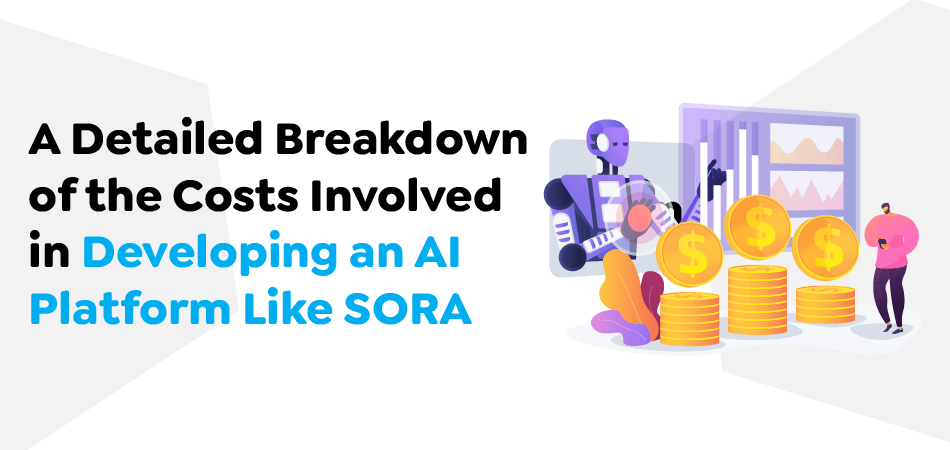
Due to many elements, it takes a lot of work to calculate the exact cost to develop a mobile app in Dubai. We can, however, give you an overview of the most essential elements and expenses:
R&D has the most fluctuating costs, and the project’s size and complexity heavily influence it. The most important expenses are:
Estimated cost: $500,000 to $1,000,000
The acquisition and processing of data is an essential aspect of the development process:
Estimated cost: $80,000 to $300,000
Training and developing the models requires significant computational resources and skills:
Estimated cost: $150,000 to $400,000
The necessary infrastructure to be set up comprises:
Estimated cost: $100,000 – $400,000 per year
The system is being deployed and assuring its efficient operation over time:
Estimated cost: $150,000 – $400,000 per year.
The total price of developing a text-to-video generator such as OpenAI’s Sora is a wide range dependent on many variables. Here’s a summary:
6.1 Initial Development Cost
Total Initial Cost: $880,000 to $2,200,000
6.2 Annual Maintenance Cost
Total Annual Cost: $250,000 to $800,000
Read more : The Evolving Realm of Mobile App Development in Saudi Arabia, Riyadh, and the UAE
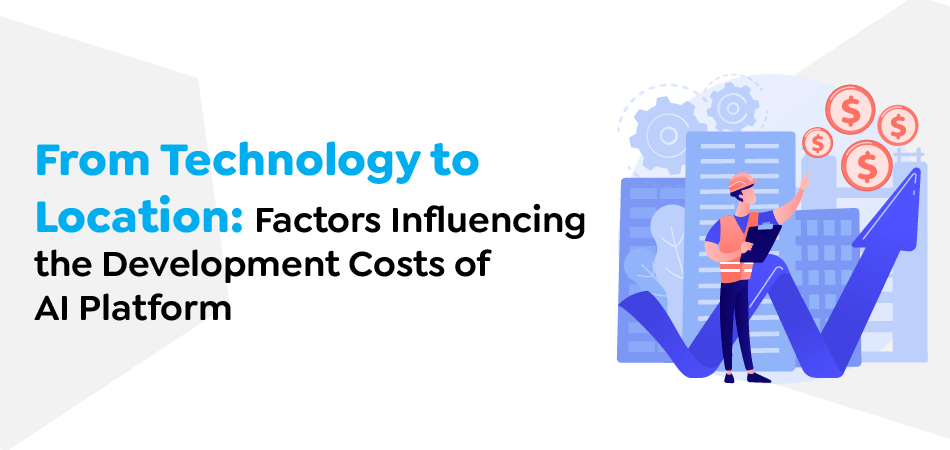
Making an AI platform such as SORA requires a multifaceted approach comprising a range of components, including NLP computer vision and machine learning models, infrastructure, and user interface design.
Each element contributes to the overall development cost, so it is essential to comprehend the different aspects thoroughly. These are the main aspects that influence the development costs of the Sora-like platform:
The core of a text-to-video generator such as Sora is its core technology stack. It consists of neural process of language (NLP) algorithms to understand and parse text, computer vision methods for creating and manipulating videos and images, deep learning models to assist in creating realistic images, and possibly more advanced AI frameworks for the synthesis of animation. The development costs associated with these latest technologies significantly impact the overall development expenses for text-to-video generator application development.
Making and fine-tuning machine-learning models for tasks like video synthesis, text generation, and semantic understanding takes enormous effort and resources, which impacts development costs. Cloud computing platforms and services like AWS, Azure, or Google Cloud offer scalable infrastructure; however, using these services could result in significant costs.
Learning an AI model such as Sora requires huge amounts of high-quality data. This includes text-based data to comprehend the nuances of language, in addition to video and image data to create visual content. The acquisition and annotation of large amounts of video and text is a significant investment. The scope and complexity of the undertaking could be a major factor in determining the cost of a text-to-video generator.
An appealing and user-friendly UI/UX is essential to any software application, and software that converts text to video is no different. The process of creating a user-friendly interface involves user research, wireframing, prototyping, and testing iteratively, all of which influence the text-to-video generator’s cost.
Data protection regulations must be adhered to, and ensuring strong security measures are among the most essential elements to safeguard user data. This can also impact the expense of developing an AI platform like Sora. Regulatory compliance audits incur the cost of implementing encryption protocols and creating secure authentication methods.
A scalable platform capable of meeting the ever-growing user demands and business requirements is essential for the long-term viability of a video generator application such as OpenAI Sora. Along with development, this requires deploying the application on solid cloud infrastructure, developing efficient data storage systems, and enhancing code to ensure scale, which affects the total cost of the text-to-video generator development.
Integrating different components and ensuring they are compatible with other platforms and devices can add to the cost of developing a Sora-like platform. This involves API integrations that allow access to external services, compatibility testing between devices and browsers, and possibly developing mobile apps to make them more accessible.
The complexity and range of the features you want to include in the text-to-video application will affect the development costs. Integrating the app with external services like cloud storage and social media platforms, as well as payment processing gateways, can add more complexity to the development process, increasing the costs. Features like NLP capabilities, video editing tools, etc., can also increase development costs.
Selecting the right location suitable for the AI app development company will significantly affect the price and timeframe of your text-to-video generator project. Outsourcing your development team to an area with low labor costs will cut costs. In particular, the labor rate in developed countries like the US, UK, Australia, or Canada is considerably greater than in countries like the UAE.
Here’s a chart that demonstrates the cost required to create an AI platform such as Sora based on the geographic areas where AI developers are located.
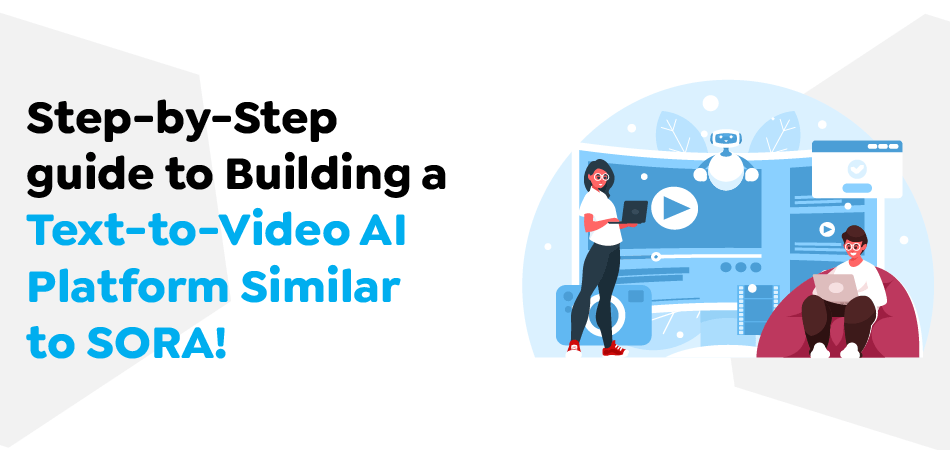
Following these steps, you can develop a text-to-video application like SORA that serves your target audience’s needs and produces engaging video content.
Making a text-to-video AI platform such as SORA requires several key steps:
Set out the goals and scope for your application. Determine the audience you want to target and the specific capabilities and features you intend to provide. Talk to an AI development firm that conducts market research to learn about the competition environment and users’ needs.
Collect large amounts of text, images, or video pairs to help train the AI models. Make sure the data is varied in quality, high-quality, and relevant to the content you want to make available in your application. Clean the data and normalize it for use in training.
Create and train AI models that efficiently convert text inputs to video outputs. You should consider using natural processing of language (NLP) to understand and create visual synthesizing. Improve your models incrementally with the data you collect to boost efficiency.
Create the structure for the text-to-video AI platform, which includes an infrastructure for the backend, database schemas, and the user interface. Choose the right frameworks and technologies to ensure scalability, reliability, and performance.
Create a user-friendly interface on your platform that lets users input text, alter video settings, and view the generated content. Hire a skilled developer focused on providing a simple, smooth user interface that will improve engagement.
AI models are integrated into the platform, and thorough tests are run to ensure they function as expected. The platform is tested on different devices, browsers, and cases to discover and resolve any issues or bugs.
Set up your platform on production servers and make it available to users. Create a marketing plan to advertise your AI video-making platform and attract new users. Examine user feedback and performance metrics after the launch to determine areas for improvement.
Always update and enhance your platform according to user feedback, technological advances, and evolving app trends. Make sure you regularly upgrade the AI models with fresh information and then retrain them to ensure that they are performing at a high level.
Read more : Unpacking the Latest AI Trends in FinTech Market Shaping The Digital Economy!
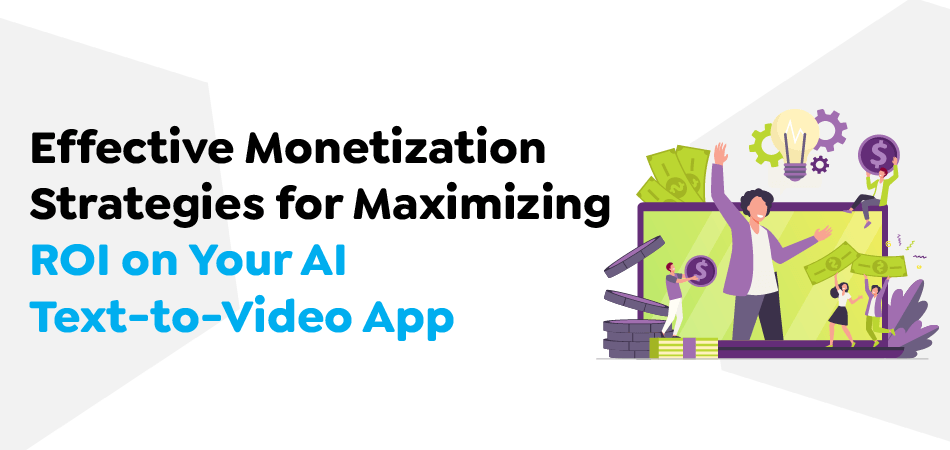
Making money from an AI text-to-video application could be a multifaceted business that requires strategic planning and execution. Here are seven methods for monetizing that allow you to get an ROI (ROI) in the investment to create an AI text-to-video or video to text app:
Implementing a subscription-based model could be a great method of generating regular revenue through your AI text-to-video application. Give users distinct subscription stages that offer different capabilities and benefits, like access to premium designs, more top exports, and advanced customization options.
You could also offer an unrestricted trial period to attract users to sign up and try the full power of the artificial intelligence text-to-video application.
Include in-app purchases for additional content functions, features, or other functionality within the application. The application should contain top-quality video templates, computers, computer graphics, and licensed music tracks or options for custom branding. By offering valuable add-ons that enhance the user experience, you can encourage customers to buy and increase income streams.
Integrate classified advertisements into your app to boost user engagement. This could include in-app video ads, display ads, or other content integrated into the app’s user interface.
Consider partnering with appropriate advertisers or ad networks to ensure you can get your target audience and increase ad revenue—a firm awareness of not interrupting users’ experience by displaying inappropriate or annoying advertisements.
Use a freemium-style model in which the bare-bones version of the application is entirely free; however, users must pay to unlock top-quality capabilities or remove boundaries.
This approach lets you draw a larger audience by offering a more flexible sharing of content while monetizing a smaller portion of users willing to pay additional costs. It’s crucial to strike an equilibrium between what’s ultimately free and what is billed for a price so that users know the value of upgrading.
Provide white-label options for the AI text-to-video application to companies or people who wish to use the trending technology for their purposes. This should include marketers, content creators, and companies that want to integrate automated video creation into their workflow.
Create custom versions of the app with a mobile app development company in UAE, which can be rebranded and customized to satisfy your customer’s needs, and charge fees for licensing or royalties to pay to use them.
Create an API entry for your application’s API (Application Programming Interface) to permit AI development companies to add its capabilities to their platforms or products.
You may wish to consider opening up opportunities for integrations, partnerships, or third-party plugins to expand your app’s reach to new users. Developers are charged for API use based on factors such as the number of requests received or the amount of access to be granted, which can lead to an evolving sales process.
Create a marketplace within your app that allows users to buy and sell premium video content, such as templates, items, or other content. This could help build a community of creators who contribute to the ecosystem, providing users with more options to select from. Make a portion of every purchase an introductory fee that encourages content creators to join in and generate sales through the market.
Read more : ChatGPT: A Conversational AI Powered Chatbot May Replace Google Search
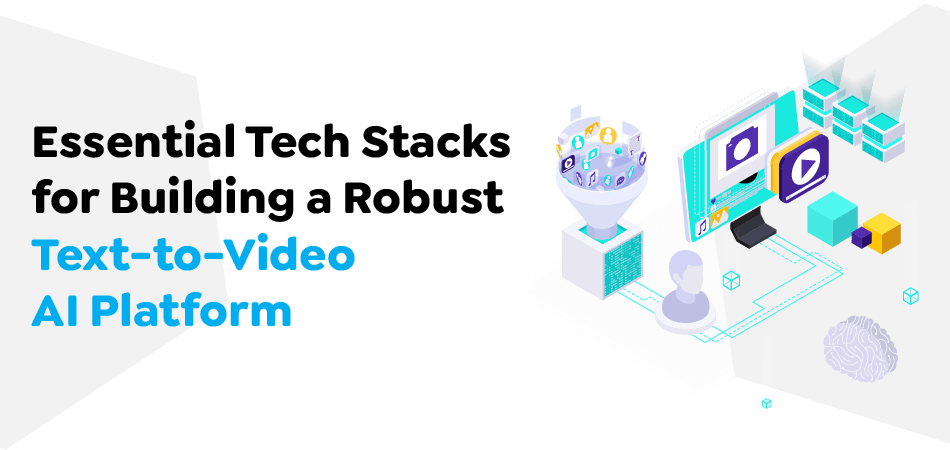
Developing a robust platform for text to video AI requires a careful selection of technology stacks suited to different functionalities and scalability requirements. Let’s explore the complexities of building a platform and the tech stacks necessary to develop it.
Focusing on web-based technologies is essential to developing the system’s web-based component. This comprises HTML, CSS, and JavaScript frameworks such as React and Angular. These frameworks used by an on-demand app development company to guarantee the smooth functioning of your application and allow for interactions with users on the Internet.
Native applications that work on both platforms, iOS and Android, are crucial for mobile app development. This is done by using languages like Swift or Kotlin on iOS and Java or Kotlin for Android. Creating native apps ensures optimal performance and seamless integration with the device’s features.
By integrating these stacks of technology and development techniques, creating an efficient text-to-video system that can be customized to your specific needs is possible.
A video-to-text app such as SORA can undoubtedly transform the way companies create content, overcome the hurdles of time limitations, and increase its acceptance rate. If you’re looking to launch an idea, inform your audience about an update, present a brand new business concept, or introduce new features to the existing product, these AI platforms can simplify and faster businesses to produce interactive content in a desired format.
So regardless of whether you’re a massive company or a new company, if you are trying to take advantage of the next-gen model of text-to-video like SORA to improve your video marketing strategies, The time to act is now—the most appropriate time to take action.
Get in touch with Techugo and learn more about the process of AI application development.
Write Us
sales@techugo.comOr fill this form